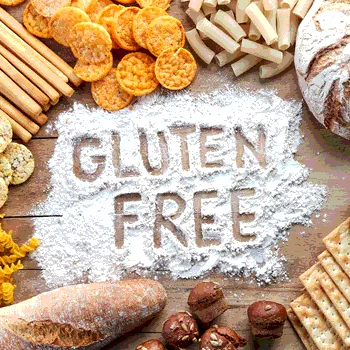Food Safety Plays a Key Role in the Evolving Gluten-Free Market

After the U.S. Food and Drug Administration (FDA) passed a rule establishing standards for labeling gluten-free foods in 2013, studies found sales of gluten-free products increased 136 percent from 2013 to 2015. Inspired by those advocating gluten-free diets for better health, many consumers joined the already existing community of those who must eat gluten-free out of medical necessity.
Today, the growth in the gluten-free market has shown a slight decrease, down from 26 percent of consumers in 2016 to 18 percent in 2018.[1] As many consumers try new trends in dieting, such as the keto or paleo diets, those who require a gluten-free diet for medical reasons, as well as those choosing to live a gluten-free lifestyle because it simply makes them feel better, are increasingly becoming the primary driver behind the demand for gluten-free food. This changing dynamic in the market is placing a higher premium on food safety for these products.
While fad dieters tend to reach for food that is convenient and reasonably priced, people with gluten intolerance require tasty products that are truly gluten-free. Finding such high-quality options hasn’t always been easy. After FDA passed the gluten-free labeling rule, manufacturers rushed to get new products on grocery store shelves, and restaurants added new options to menus. This proved to be a mixed blessing because in some cases quality was sacrificed for speed to market. On the plus side, awareness increased about the need for gluten-free foods and beverages.
The new labeling rule didn’t establish testing requirements, which meant there was no mechanism for validating that products were gluten free. Even as demand for these products grew, consumer trust in manufacturers and foodservices declined.
With consumers demanding greater truth in labeling and transparency in products and by foodservice establishments, the gluten-free market is becoming more competitive. Smaller brands that offer good quality products are nonetheless struggling to adapt to the high transparency expectations of consumers. In some cases, larger conglomerates have stepped in and bought out smaller labels, while other brands with lower-quality offerings have fizzled out.
Gluten-free consumers are increasingly looking to third-party certifications to validate the quality of gluten-free products bought by consumers or served in foodservice establishments. Unlike FDA, certification programs may require that companies and foodservices undergo independent, third-party audits to ensure that their processes and procedures meet industry standards for manufacturing or serving gluten-free food. In many cases, certification standards are more rigorous than the FDA rule. The transparency that comes with third-party certification, coupled with the fact that the process is voluntary is a powerful selling point for manufacturers, provides consumers with assurance that brands and products served in foodservice establishments are truly gluten-free.
Even food products that are inherently gluten-free can benefit from certification. Many of these products are produced at mixed-use facilities or are prepared by foodservices in locations where gluten-containing meals are also made. The risk for cross-contamination is a real concern. Obtaining a quality gluten-free certification helps manufacturers and foodservices minimize the risk of cross-contamination and validate that they are doing everything necessary to ensure the safety of the food.
The evolving gluten-free community means that food safety practices are going to have to be top notch to meet the demands of a passionate community of consumers. As consumers becoming increasingly selective and demanding transparency, food safety has become a key differentiator. By pursuing certification from a reputable organization, brands can ensure that they not only survive shifting tastes but prosper in a more competitive landscape.
Channon Quinn is chief operating officer for the nonprofit Gluten Intolerance Group (GIG). GIG’s food safety certification programs, the Gluten-Free Certification Organization (GFCO) and Gluten-Free Food Services (GFFS) have been recognized leaders in the gluten-free community for more than 20 years. The GFCO certification logo is the symbol of trust for the gluten-free community, with more than 50,000 products certified worldwide. For more information, visit www.gluten.org.
Reference
1. reports.mintel.com/display/860811/.
Looking for quick answers on food safety topics?
Try Ask FSM, our new smart AI search tool.
Ask FSM →







